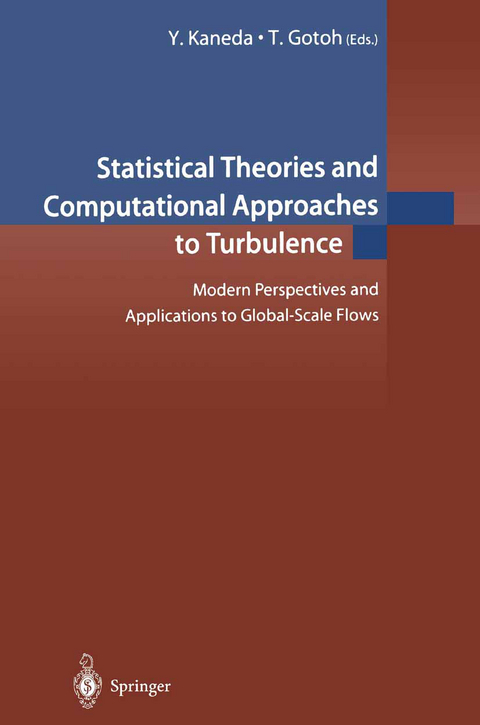
Statistical Theories and Computational Approaches to Turbulence
Springer Verlag, Japan
978-4-431-67004-9 (ISBN)
I Application of the Statistical Theory to Stratified and Rotating Turbulence.- Computational Challenges for Global Dynamics of Fully Developed Turbulence in the Context of Geophysical Flows.- Structural and Statistical Aspects of Stably Stratified Turbulence.- Dynamics of Rotating Stably Stratified Flows.- An Introduction to Mixing in a Stably Stratified Fluid.- Linear Processes in Stratified Turbulence with Rotation or Mean Shear.- II Wall-Bounded Flows.- Very Large Anisotropic Scales in Turbulent Wall-Bounded Flows.- Turbulent Plume Diffusion in a Pipe Flow by the PDF Method.- A Hybrid RANS/LES Calculation of Turbulent Channel Flow.- Anisotropy versus Universality in Shear Flow Turbulence.- LES Study on the Very Large-Scale Structures of Wall-Bounded Turbulence and an Effect of Thermal Stratification.- III Statistical Theory of Turbulence and LES Modeling.- High Resolution DNS of Incompressible Homogeneous Forced Turbulence —Time Dependence of the Statistics—.- Subgrid Models for Two-Dimensional Turbulence based on Lagrangian Spectral Theory.- LES Modelings based on the Lagrangian Renormalized Approximation.- LES of Stably Stratified Turbulence.- The Eulerian Time Correlation Function in Homogeneous Isotropic Turbulence.- Predictability of 3D Isotropic Turbulence —Effect of Data Assimilation—.- Orthonormal Divergence-Free Wavelet Analysis of Spatial Correlation between Kinetic Energy and Nonlinear Transfer in Turbulence.- Statistics of the Energy Dissipation Rate in Turbulence.- Lyapunov Exponent of the System Described by Kuramoto-Sivashinsky Equation.- IV Geophysical Turbulence.- Toward a Statistical Ocean Dynamics.- Internal-Wave-Packet Propagation and Breaking.- Pattern Formation in Two-Dimensional Turbulence on a Rotating Sphere.- Quasi-GeostrophicTurbulence in a One-Layer Ocean affected by Horizontal Divergence.- Self-Similarity of Decaying Two-Dimensional Turbulence governed by the Charney—Hasegawa—Mima Equation.- A Fast Method for the Calculation of the Fluid Flow on a Sphere using a Combined Compact Difference Scheme.- V Panel Sessions.- Panel Session 1: Advanced Computational Approaches in Turbulence Research.- Panel Session 2: Turbulence Research for Geophysical Applications.
| Zusatzinfo | 78 Illustrations, black and white; IX, 409 p. 78 illus. |
|---|---|
| Verlagsort | Tokyo |
| Sprache | englisch |
| Maße | 155 x 235 mm |
| Themenwelt | Technik ► Maschinenbau |
| Schlagworte | computational approaches to turbulence • Geophysical Turbulence • global scale flows • Statistical theory of turbulence • Turbulence Modeling |
| ISBN-10 | 4-431-67004-1 / 4431670041 |
| ISBN-13 | 978-4-431-67004-9 / 9784431670049 |
| Zustand | Neuware |
| Haben Sie eine Frage zum Produkt? |
aus dem Bereich


